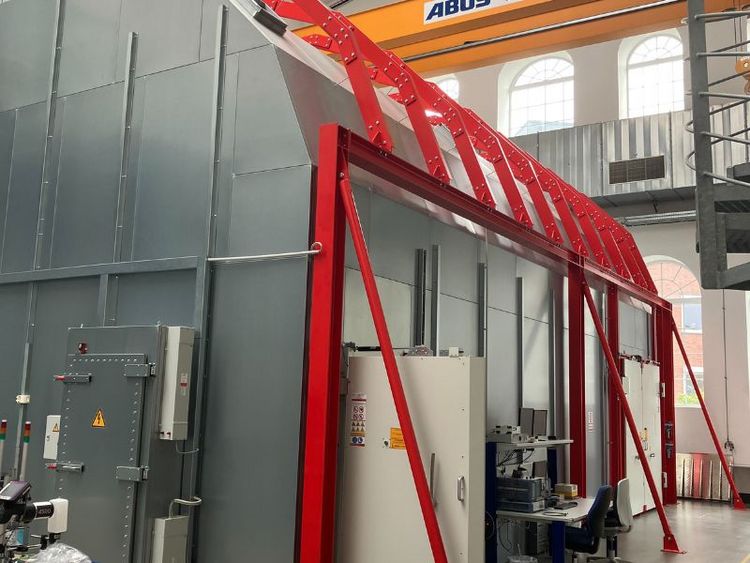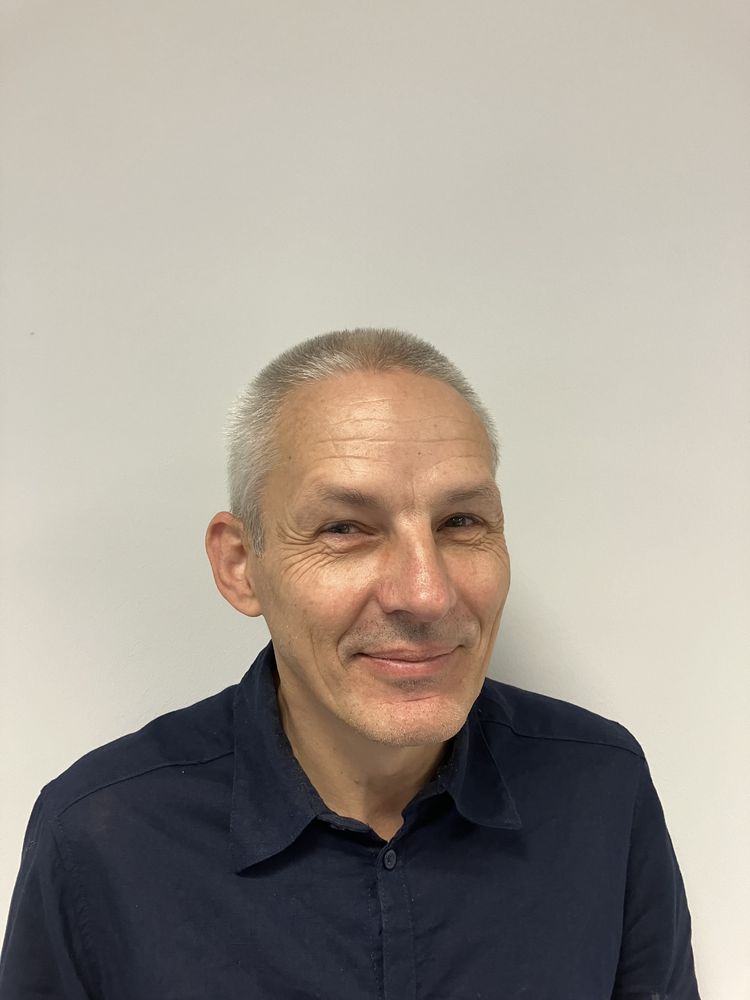14 November 2024
What does a car radio key have in common with the photo printer in your local drugstore and a washing machine? All of them might well have passed through the TÜV NORD laboratory for high frequency technology in the Cologne suburb of Dellbrück. For it is here that Ralf Trepper, Denis Raschka and their team test such devices for immunity to interference, electromagnetic compatibility and cybersecurity, among other things.
In the laboratory for high-frequency technology, the appliances you test include washing machines. Why’s that?
Denis Raschka: Nowadays, every device, car and machine uses wireless technology to communicate with its environment. To explain our work in a nutshell, we need to ensure that any given device doesn’t interfere with other applications and that it can’t be interfered with by other applications. More and more manufacturers are looking to integrate wireless applications into their devices. Washing machines have been around for more than a hundred years. The difference is that their manufacturers now want to be able to connect them with an app via Bluetooth. For example, they want their washing machines to be able to let their users know when the washing cycle has finished, sparing them the trouble of a fruitless trip to the basement. In other words, the goal is to make people’s life easier.
Where else can you find devices that do this?
Denis Raschka: They can be found pretty much on every street corner. Starting with radio-controlled photo printers in drugstores which enable wireless photo transfer, allowing customers to print out their photos directly. And in our homes we have smart home applications, consumer electronics. Of course, devices that make our lives easier also include remote car keys, garage door openers and proximity warning sensors in our cars. We recently tested a really cool system: a class set of virtual reality glasses. Once the kids have put them on, the teacher can take them on a virtual trip through the Roman Empire, for instance. That was a very interesting project.
These are all very different products. Are they all subject to the same regulation?
Ralf Trepper: There actually used to be type tests for the individual products, but the big change came in 1995. At that time, we were one of the first laboratories to be accredited. There then came the change to regulate market access at European level. If you can prove CE conformity here, you can sell your device throughout Europe – according to the same regulations and device-specific standards. We test the devices before they hit the market. The Radio Equipment Directive (RED) regulates requirements including frequency use, equipment safety and the electromagnetic compatibility of equipment. So there isn’t one regulation, but several. However, they have an impact on all products that feature wireless technology in whatever form. The manufacturer can draw up the declaration of conformity based on the test reports and give their device a CE mark.
Let’s go back to the different applications for a moment. Are there many laboratories that specialise in particular applications?
Ralf Trepper: Yes, there are some laboratories that offer HF testing. However, there are some special applications that not many of them can test. Take lane change assistants, for example. The latest generation operates in the 76 gigahertz range. There aren’t many laboratories in Europe that can measure such high frequencies. Measurement technology has become very complex and time-consuming to use.
© TÜV NORD GROUPThe large test chamber in the RF laboratory in Cologne, where everything revolves around power measurements and interference immunity, electromagnetic compatibility, electromagnetic fields, device safety and cybersecurity.
© TÜV NORD GROUPThe large test chamber from the outside in the HF laboratory in Cologne.
That sounds like a frequency change ...
Ralf Trepper: The first radar systems used in lane change assistants were very inaccurate. The old systems operated in the 24 gigahertz range. However, the signal width meant that the resolution wasn’t particularly good. The systems would be able to detect obstacles, but not say how big they were. So, the automotive industry was understandably interested in greater accuracy and a wider signal bandwidth. As it happens, the International Telecommunication Union (ITU), a UN sub-organisation, wanted to shift the frequency range for such applications to 76 gigahertz in any case. There were still resources available that could be used. The advantage of today’s radar sensors is that they have much higher resolution, in part due to the improved technology and the large bandwidth they are allowed to use.
How do you respond to changing requirements?
Denis Raschka: We’re constantly investing in new testing equipment, which is becoming more and more complex. We’ve just put a new test chamber into operation that would also be big enough to accommodate a Smart car; the size is important to us because we don’t just test components in isolation, but also once they’ve been installed. And we’re constantly expanding our knowledge and accreditations. We’ve recently expanded our accreditation in the cellular field.
You mean mobile communications, 5G for example ...
Denis Raschka: Exactly, GSM, LTE, NB-IoT and 5G. That’s a huge market. We can now carry out verification measurements on pre-certified modules. These modules are usually found in devices that are maintained remotely or where recorded data has to be uploaded to a cloud.
Is it difficult to constantly adapt to new products, test methods and requirements?
Denis Raschka: I actually prefer it when we can get our hands on something that we haven’t had before, as long as it's something new. Last year, we tested some specific car radios for the first time. That was a real challenge. But it’s also fun because you have to think about how to design the test.
So, there is no single off-the-shelf test. But can you still say how long these kinds of tests take in your laboratory?
Ralf Trepper: If we’re talking about short-range devices, by which I mean single-channel wireless – for example, a garage door control system with transmitter and receiver – then it takes three to four days to carry out the measurements. Then there are the set-up times, and you have to write the test report. The throughputs are fast here. We also have other, much more complex tasks. These might involve a large device, say. with feed lines, a LAN port, a serial port and wireless technology of all kinds. We need to keep hold of equipment like this for a few weeks.
If you consider the few existing sets of standards, that’s a long time. What exactly gets tested?
Denis Raschka: In the EMC field, we measure device emissions and test the immunity of equipment to electromagnetic interference. When it comes to wireless, the things we measure include power, emissions and radio signal bandwidth. The third pillar is the electrical safety of equipment. In the coming year, cybersecurity is going to become mandatory and will have to be considered for radios as well.
And what happens next?
Ralf Trepper: It’s very difficult to predict the future. With the benefit of hindsight, things get much clearer. Let's look at the example of a remote car key, a non-specific short-range device. The first of these came onto the market at the end of the 1980s. At that time, we mainly had analogue radio, and digital radio was still in its infancy. What fascinated me most was how quickly things developed back then. The first generation had a fixed code in the key that never changed. When it became apparent that this wasn’t secure, they introduced the blank code. This was the first innovation, in that it always switched synchronously with the car. After that, you had smart systems: In principle, these were keyless systems that communicated with the car and sent security packages back and forth. The car door wouldn’t open until these had been fulfilled. So a lot has happened in this respect. The function has remained the same, but the security aspects have changed enormously.
What other significant progress has been made?
Ralf Trepper: There have been incredible developments, especially in radar technology. In the beginning, radar systems were very simple, and advances in computing power have brought about a vast amount of change. But things are moving particularly fast in the cellular field; you can see this when you look at GSM, which is still active to some extent, and UMTS and 4G, and then consider the current 5G standard. These represent very big steps in terms of data transfer volumes. That things would develop so quickly and to this extent was not something that I ever saw coming. If you think about it, it’s only been 17 years since the first smartphones came onto the market. It’s precisely the fact that so much is happening that makes the work such fun. What marks us out as interesting is that we get to handle prototypes. This lets us chart the developments, and we get to see each new step as and when it’s reached, which isn’t something that otherwise happens. Even though we may well not understand everything at first, because it all starts off looking like a black box to us, like it does to everyone else. But we learn a lot by taking the measurements, from the technology and by talking to our customers, and that makes our work very interesting.
About Ralf Trepper and Denis Raschka:
Denis Raschka is deputy laboratory manager; he studied electrical engineering in Cologne and came to the laboratory as a jobbing student. As the person responsible for electromagnetic compatibility (EMC), he is the interface between radio and non-radio devices and carries out EMC tests to ensure compliance with international norms and the standards that govern the devices to be tested.
Ralf Trepper is a wireless expert in the HF laboratory. He joined the lab as an electrical engineering assistant at the end of the 1980s while he was studying communications engineering, initially just to help out. He’s now the laboratory manager at TÜV NORD Hochfrequenztechnik.







